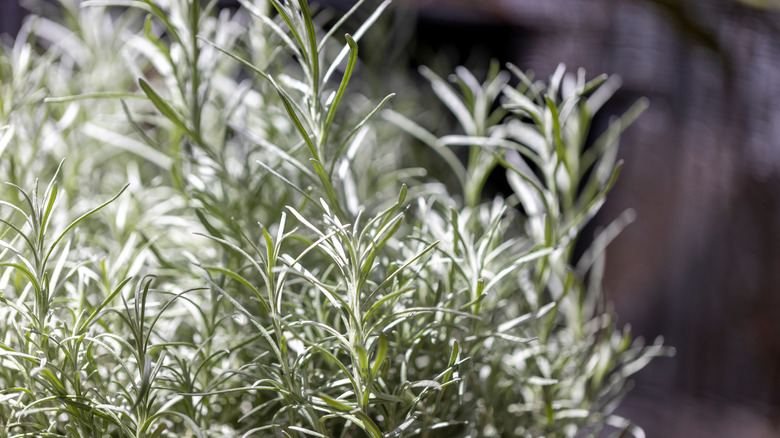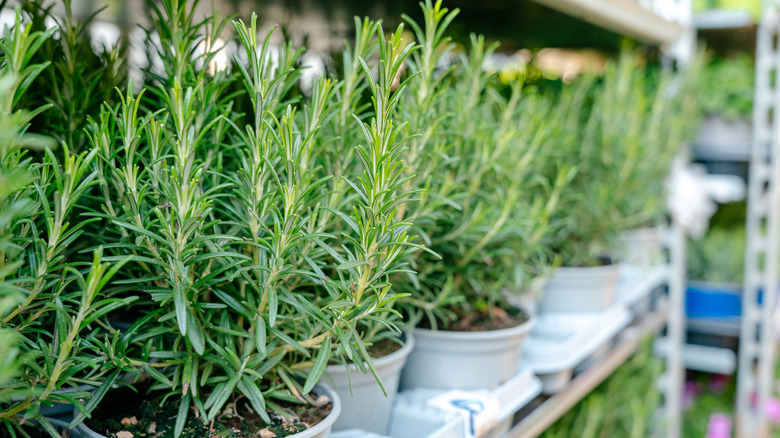How To Easily Propagate Rosemary To Fill Your Garden With More Free, Fresh Herbs
The aromatic perennial rosemary (Salvia rosmarinus) is a bit of a jack of all trades. It's a staple of Greek and Mediterranean cuisine, its medicinal uses range from curing indigestion to improving concentration, and it's an ingredient in oils and tinctures for the skin and hair. Having a ready supply of free, fresh rosemary at hand for when a need arises, is easy when you propagate the plant using soft stem cuttings. Unlike growing rosemary from seed or propagating by layering, this method doesn't require any fancy equipment or a big investment of time.
Rosemary, hardy in zones 8 through 10, has inch-long, pine needle-like leaves that are green on top and have white, fuzzy undersides. Tiny flowers in white or shades of blue attract pollinators from spring to summer. Both the flowers and the leaves are edible, but the stems can result in an unpleasant woody texture when they're added to food unless they're very young and tender. However, these stems are aromatic and make a pleasant-smelling addition to a sachet or diffuser.
Your existing rosemary plants will be ready for taking cuttings when they start to grow new, green stems in the spring. The cuttings will start to stress as soon as you snip them, so have your rooting pots ready before you begin. The pots should be at least three inches deep, and the wider they are, the more cuttings you can fit in each one. Fill the pots with a commercial potting mix, or make your own with equal parts coco coir (as an alternative to peat moss) and perlite to ensure good drainage.
How to take and prepare your cuttings
To gather your cuttings, snip the top three to five inches off green stems without flowers, right below a node — the spot where leaves are attached to the stem. Strip off all the leaves below the top one or two inches of the stem. Dip the bottom of the cuttings into rooting hormone, stick them into the prepared pots, and gently firm the soil. If you're working with multiple cuttings, leave an inch or two between each one, and make sure you water them gently with a spray bottle. Create a miniature greenhouse by tenting the cuttings with plastic wrap or storage bags, and then place the pots in a bright but not sunny location.
The cuttings should be ready to transplant in four to six weeks. Rosemary does best when it's put in the ground in the fall – if you can't time your cutting project so the plants are ready to transplant at the right time, repot your rosemary so it continues to thrive until the right season for outdoor planting rolls around.
Plant rosemary in well-drained, slightly acidic soil in full sun. Give the plants a boost by working four inches of organic material into the soil before planting. Rosemary rarely needs fertilizer, but if the plants are not thriving, try a single application of all-purpose fertilizer. Rosemary doesn't like having wet feet and the plants will thrive with a simple watering schedule. New plants grown from cuttings should be ready to harvest in about a year.

